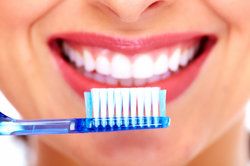Oral Health 101: When to Replace Your Toothbrush
 It’s easy to take certain things that are essential to our health and well-being for granted. For example, consider your toothbrush. It’s always there, dependably waiting for you every morning after you wake up and every evening before you go to bed. Yet, in order for your toothbrush to care for you as well as it can, you must learn to take proper care of it. This includes knowing when the time is right to bid farewell to your faithful friend and replace it with a sparkling new recruit in the battle against plaque.
It’s easy to take certain things that are essential to our health and well-being for granted. For example, consider your toothbrush. It’s always there, dependably waiting for you every morning after you wake up and every evening before you go to bed. Yet, in order for your toothbrush to care for you as well as it can, you must learn to take proper care of it. This includes knowing when the time is right to bid farewell to your faithful friend and replace it with a sparkling new recruit in the battle against plaque.
At the acclaimed general dentistry practice of Victor R. Siegel, DDS, in Rockville, toothbrush care is taught to our patients along with vital other oral health lessons as part of our commitment to patient education. The more you know about your oral health and how you can protect it, the more likely you are to keep your smile brilliant and healthy for a lifetime.
How often should a toothbrush be changed?
The American Dental Association recommends that you change your toothbrush or, if you use an electric toothbrush, your toothbrush head approximately every three to four months. This varies from person to person. People who tend to use more force in brushing their teeth will probably have to replace their toothbrushes more frequently than those who use a gentler touch.
A good rule of thumb is this: Once the bristles on your toothbrush start to point in different directions rather than rising uniformly from the toothbrush, it’s time to get a replacement.
Why is it necessary to replace your toothbrush?
Contrary to what many people believe, it is not necessary to replace your toothbrush because of the accumulation of germs over time. Although bacteria certainly do accumulate on your toothbrush, they aren’t particularly dangerous to your oral health as long as you let your toothbrush thoroughly air dry between brushings.
Rather, it is necessary to replace your toothbrush because worn and frayed bristles are not as effective at removing plaque as fresh, new bristles. The longer a toothbrush remains in use once the bristles become permanently bent and worn down, the less effective it is at keeping your teeth clean and free from bacteria and debris.
Is it necessary to change toothbrushes after an illness?
While you certainly may replace your toothbrush after an illness, it usually isn’t necessary to do so. Again, as long as you allow your toothbrush to air dry thoroughly after rinsing it with tap water, it should be safe for use even after an illness. Germs require moist environments to survive. Once a toothbrush dries, it is no longer a hospitable host for germs.
If it gives you peace of mind, you can place your toothbrush in a solution of half water and half hydrogen peroxide, rinse it, and let it air dry after each use. This will effectively cleanse the toothbrush.
Learn More about Oral Hygiene
To learn more about proper toothbrush use and at-home oral hygiene, we urge you to contact our cosmetic and general dentistry practice today.


